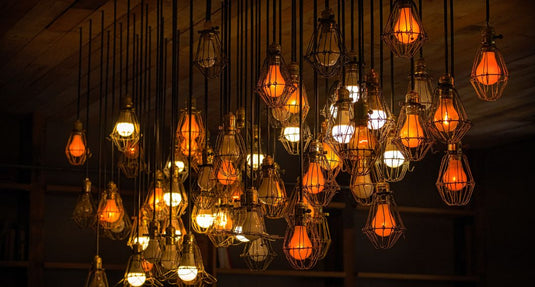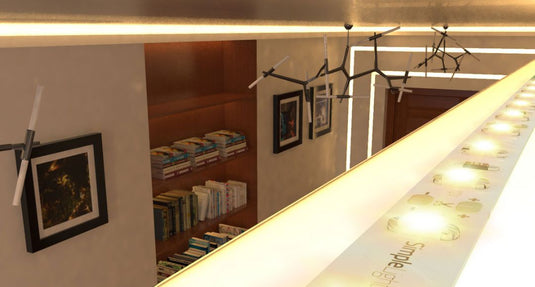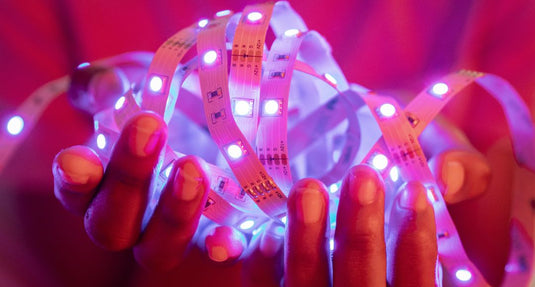LED light bulbs are steadily increasing in popularity, and the reason behind this is their energy efficiency and extended lifespan! The only challenge you may encounter when you first switch to LED bulbs is their compatibility with the dimming controls that you previously used. Does this mean LED bulbs cannot be dimmed? LED bulbs can be dimmed. However, you must understand the relationship between dimmers and LED bulbs and the most effective way to utilise them. Here's everything you need to know!
The Rise of Dimmable LED Bulbs
Dimmable LED bulbs are becoming a staple for many residential properties and commercial establishments. Why, you might ask? Dimmable LED bulbs can diversify the atmosphere of your space. Dimming the lights can create a relaxing mood while brightening them can create an ergonomic environment!
Aside from that, dimmable LED lights are more energy-efficient and long-lasting than regular LED bulbs. Since you're not using it at full capacity, its energy consumption will decrease while its lifespan will increase!

Understanding Dimmers and Compatibility
You'll need a dimmer switch to enable you to dim and brighten your dimmable LED bulbs. A standard light switch can only turn your lights on and off. Without a dimming device, a dimmable fitting will not be able to utilise its dimming capabilities.
With dimming dimmable LED light bulbs, you need to find a compatible dimmer switch. This means not all types of dimmers may work. So, the dimmer switches you're using with your old incandescent or halogen bulbs may not work smoothly with a dimmable LED bulb. Only an LED-compatible dimmer switch will provide you with a smooth transition from dim to bright and vice versa.
There are instances when you'll find a dimmable LED bulb that dims with your traditional dimmer switch. However, you'll immediately notice that the lights are flickering. This is not a good sign and may damage your luminaires.
Dimmable LED Bulb Technologies
There are different technologies employed with LED dimmer switches. Here are a few that you should be aware of:
- TRIAC – it manages the amount of electricity that goes into the light. A TRIAC dimmer has a knob, switch, and TRIAC circuit wherein the knob is used to control brightness level, and the switch is used for on and off.
- Phase-Cut – it’s a common dimming technology for residential settings. A phase-cut dimmer reduces the 240v power of light at a specific phase of the sine wave.
- Leading-Edge – it uses a current that is switched off as the AC wave starts right after it crosses zero. A leading-edge dimmer produces a surge of voltage every half cycle, issuing a rush of current to the luminaire.
- Trailing-Edge – it employs a current that is switch switched off as the AC waveform ends right before it traverses to zero. Trailing-edge dimmers don't result in a rush of current into the light fixture.
Depending on the technical specifications of your lighting fixture, the type of dimmer you require will vary. Ask the staff or contact the suppliers to ensure that the LED fixture and dimmer switch you're purchasing are compatible.
Common Issues and Challenges
How critical is finding a compatible dimmer switch for your LED bulbs? As mentioned before, incompatible LED fitting and dimmer switches will make your lights flicker and potentially ruin them. That alone is something that you cannot dismiss, especially if your flickering lights are in a room where you need to work and accomplish multiple tasks and activities.
In addition, you'll notice that your lights are buzzing. Your fixtures will buzz because of the discrepancy between the bulb's wattage and the dimmer switch. If you find the flickering annoying, how much more if it's accompanied by a buzzing noise?
Also, the dimming range will be limited, so you won’t be able to fully utilise the capacity of your lights. It’s a waste since your lighting experience will not be as rich compared to when you have access to the full dimming range.
Compatibility Testing: Dimmer and LED Bulb Pairing
This must be the part that you're most curious about. How will you know if the dimmer and LED bulb are compatible? The best way to identify is by checking the minimum and maximum load range of the dimmer switch. Also, keep in mind that a trailing-edge dimmer is specifically made for LED bulbs since they have a low wattage capacity. In contrast, leading-edge dimmers are used for incandescent and halogen bulbs because of their high wattage starting point.
Selecting the Right Dimmer for LED Bulbs
When selecting a dimmer switch for your LED bulbs, you must calculate the total load to guarantee that the dimmer can support the number of LED bulbs you will connect. How? Divide the minimum and maximum load capacity of the dimmer by ten. So, if the minimum is 200w and the maximum is 600w, the minimum load is 20w, and the maximum load is 60w. This means your LED bulbs must have a 20w to 60w load.
Then, check the wattage count of the bulb. If it's five watts and you plan to use five bulbs, it's okay since the total load is 25w, which is higher than the 20w minimum.
Conclusion: Illuminating Wisely with Dimmable LED Bulbs
Dimmable LED bulbs are more energy-efficient and long-lasting than regular LED bulbs. In addition, it can change your space's mood and diversify the room's vibe! Just make sure you use a compatible dimmer switch with your LED lights. That way, you can enjoy those benefits and avoid issues and challenges. If you don't know where to purchase your LED dimmer switches and LED light bulbs, visit our website, LED Supplier!




